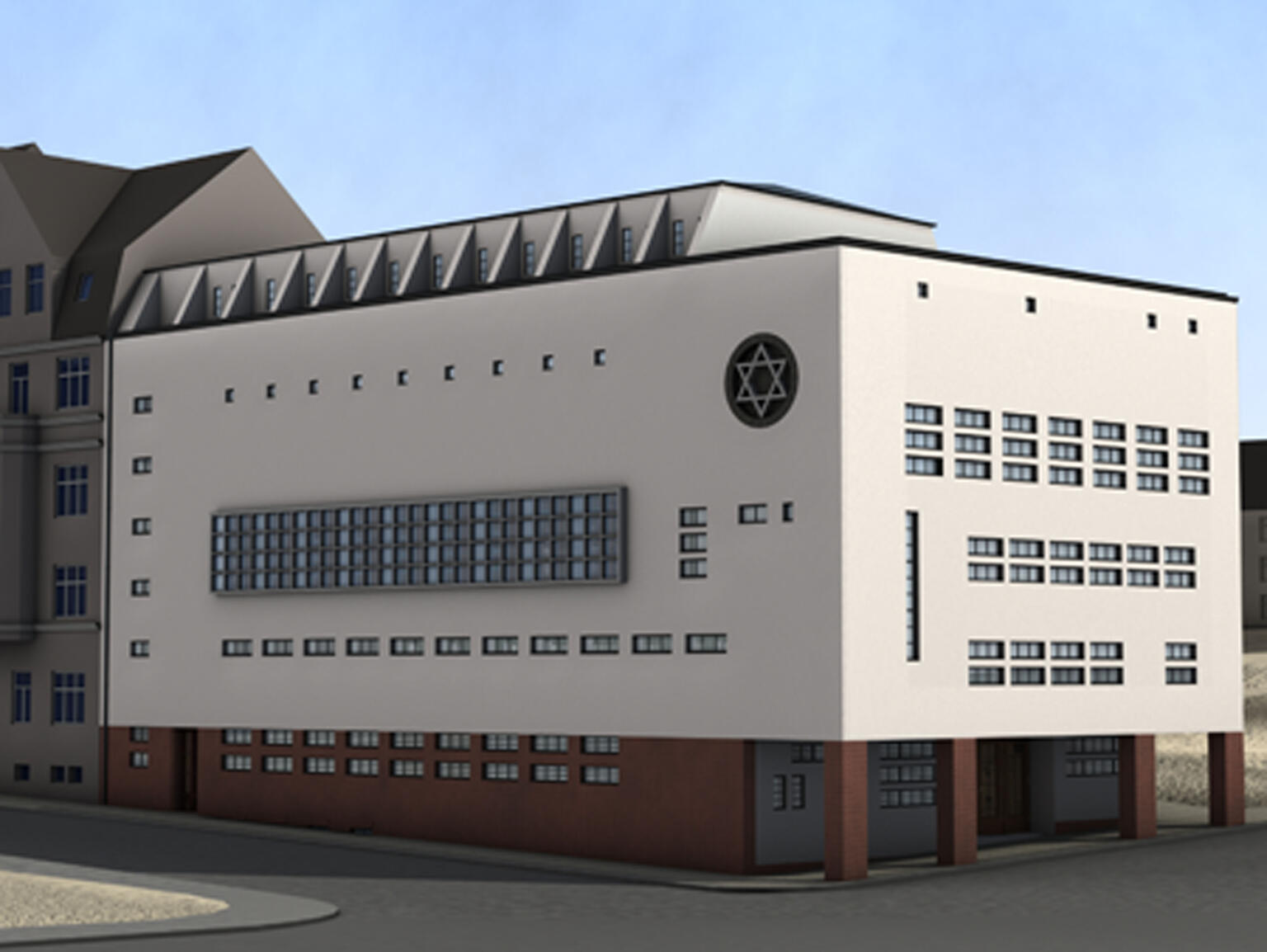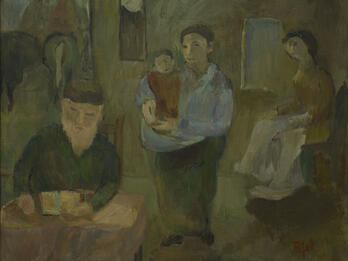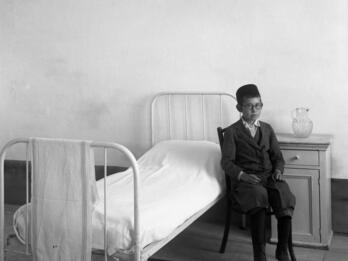Reform Synagogue, Plauen
This modern synagogue in Plauen (in the Saxony region) was one of the few synagogues built in Germany in the economically turbulent years of the Weimar Republic. Jews and non-Jews contributed funds for its construction and shared space. Built in the style of the Neue Sachlichkeit (New Objectivity), a movement in German art that rejected expressionism for a less subjective approach. In architecture, this trend was known as Neues Bauen (New Building) and featured a plain, practical approach to design and construction. The Plauen synagogue was a largely unadorned white box sitting atop a red, brick base, combining communal and sacred space in one structure. It was destroyed on Kristallnacht (November 10, 1938).
Credits
Virtual reconstruction. Courtesy Technische Universität Darmstadt, Digital Design Unit.
Published in: The Posen Library of Jewish Culture and Civilization, vol. 8.








